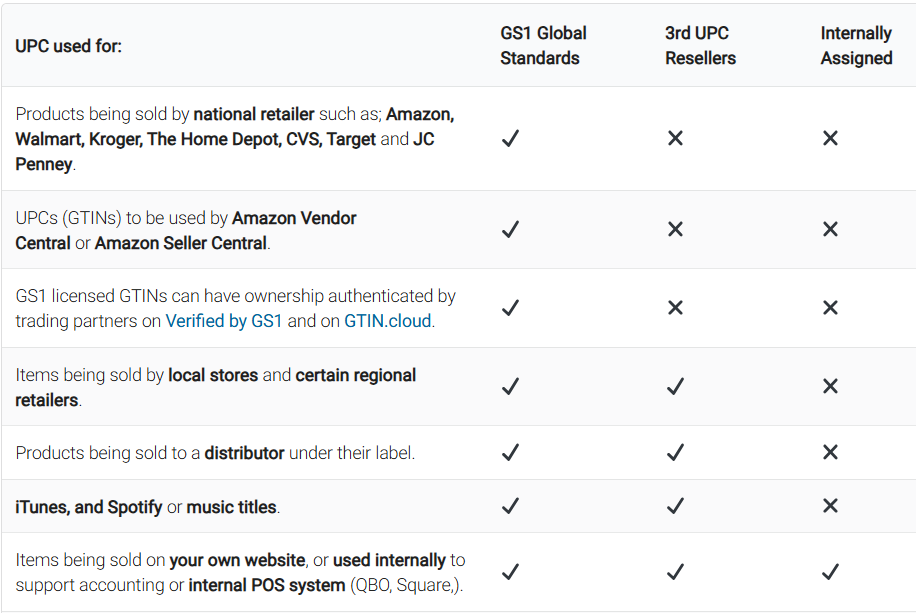UPC Barcodes Overview
UPC, or Universal Product Code, is a 12-digit identifier used for trade items in North America that are bought and sold. Each variation of a product, such as different sizes or colors, requires its own unique UPC. Whereas the UPC is the 12-digit numeric identifier, the UPC barcode is a machine-readable 1D symbol that represents this identifier. Specifically, the UPC-A version encodes the 12-digit number into a pattern of bars and spaces.
What is a GTIN (Global Trade Item Number)
To support international commerce, the GS1 global standards organization introduced the term GTIN (Global Trade Item Number) to represent a 14-digit universal identifier. Retailers often use the term GTIN when referencing barcode requirements for point-of-sale items, as UPCs comply with GS1's global standards. A UPC is a GTIN that is represented as 12 digits (GTIN-12). To learn about GTINs, please visit www.gtin.info.

Why UPC Barcodes are Required by Retailers
Prior to barcodes, retailers and suppliers had to key enter every item being scanned. Barcode technology open the doors for a relatively low-cost mechanism to speed data capture and dramatically increase accuracy. When products are correctly identified, they can be ordered, tracked, and re-ordered by retailers with very little data entry.
How to Get UPC Barcodes
Obtaining UPC barcodes is essential for businesses looking to sell products through retailers or online marketplaces. How you obtain barcodes for your products depends on where you plan to sell them. GTINs can be licensed directly licensed in your company's name, purchased through a third-party UPC reseller, or assigned internally. Use the following guidance to choose the most suitable source based on the intended use of the UPC and the requirements of your trading partners .FYI - licensing GTINs through the global standards office will ensure that the barcode is registered correctly to avoid any issues in the future.

CLICK HERE TO OBTAIN GS1 UPC BARCODES
Ramifications of Incorrect or Unauthorized UPC Barcodes
Using incorrect or unauthorized UPC barcodes can lead to serious repercussions for businesses. It can result in inaccurate inventory management, pricing errors, and even legal implications. Therefore, it is crucial to ensure the legitimacy and accuracy of the UPC barcodes used for products. Many retailers (Amazon, WalMart, JCPenney, Home Depot, Kroger) specifically indicate UPCs should NOT come from resellers and use tools such as GTIN.cloud to validate UPC ownership.
Common Mistakes when Getting UPC Barcodes
1. Assigning same UPC to multiple products. Each unique product and product variant requires a new GTIN assignment.
2. Not properly associating unique product data to an assigned GTIN. If data is not checked by a 3rd party, inaccurate data may be inadvertently shared.
3. Using low resolution or for-position-only (FPO) barcode file when printing. Always use high resolution .eps barcode files that are compensated for print gain. Learn more.
4. Incorrectly sizing a UPC barcode. Click here for sizing guide.
5. Printing the bars and/or spaces in a color that cannot be scanned. Learn More
6. Having only 1 person at an organization manage UPC (GTIN) assignments. A lack of knowledge transfer accounts for many errors companies make when assigning new GTINs and barcodes.